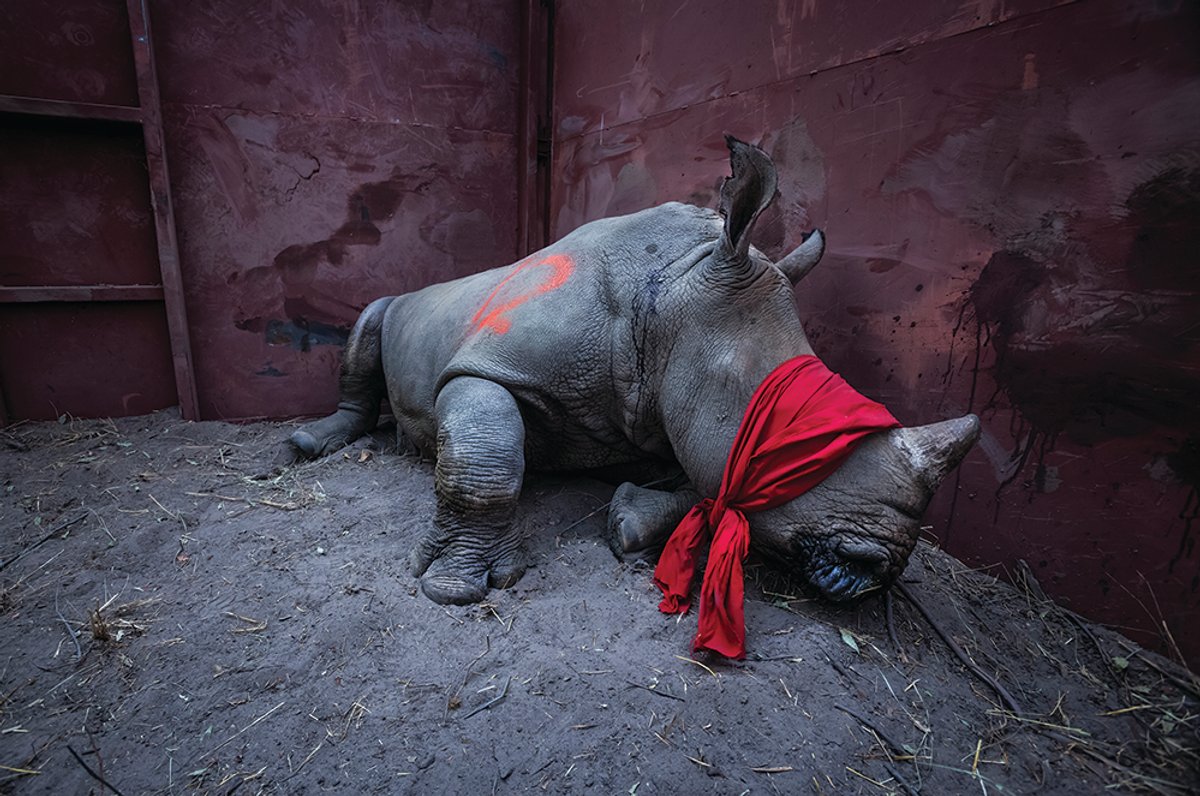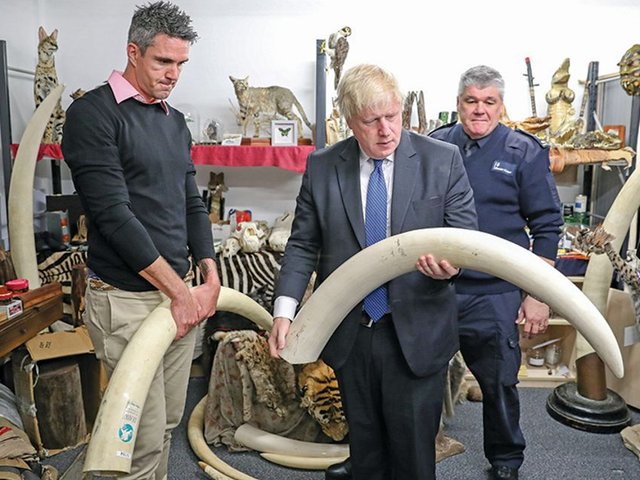At the beginning of the 20th century, half a million rhinos roamed Africa. Today, there are fewer than 5,000. In 2007, 13 rhinos were poached; since 2013, more than 1,000 have been killed each year. Overwhelmingly, their horns end up on the Chinese and Vietnamese market, where a burgeoning elite views rhino products as an elixir for all manner of ills, or as an ornamental trinket—the ultimate status symbol.
Rhinos are the most iconic of a host of endangered species driven to extinction by such rampant black markets. Pangolins, the only mammal with scales, are frequently found roasted and served in restaurants across East Asia. Black bears are farmed for their bile, which is extracted for use in traditional medicines, while shark fins and turtles are turned into soup. More than 6,000 tigers are held in captivity in China today—before their skeletons are soaked in rice wine and sold to the elite.
This has posed a challenge to some of the world’s most celebrated wildlife photographers. Should their practice and livelihood change as the animals they spend their careers capturing teeter on the brink of extinction?
“Magazines shy away from publishing such imagery. It doesn’t sell well”
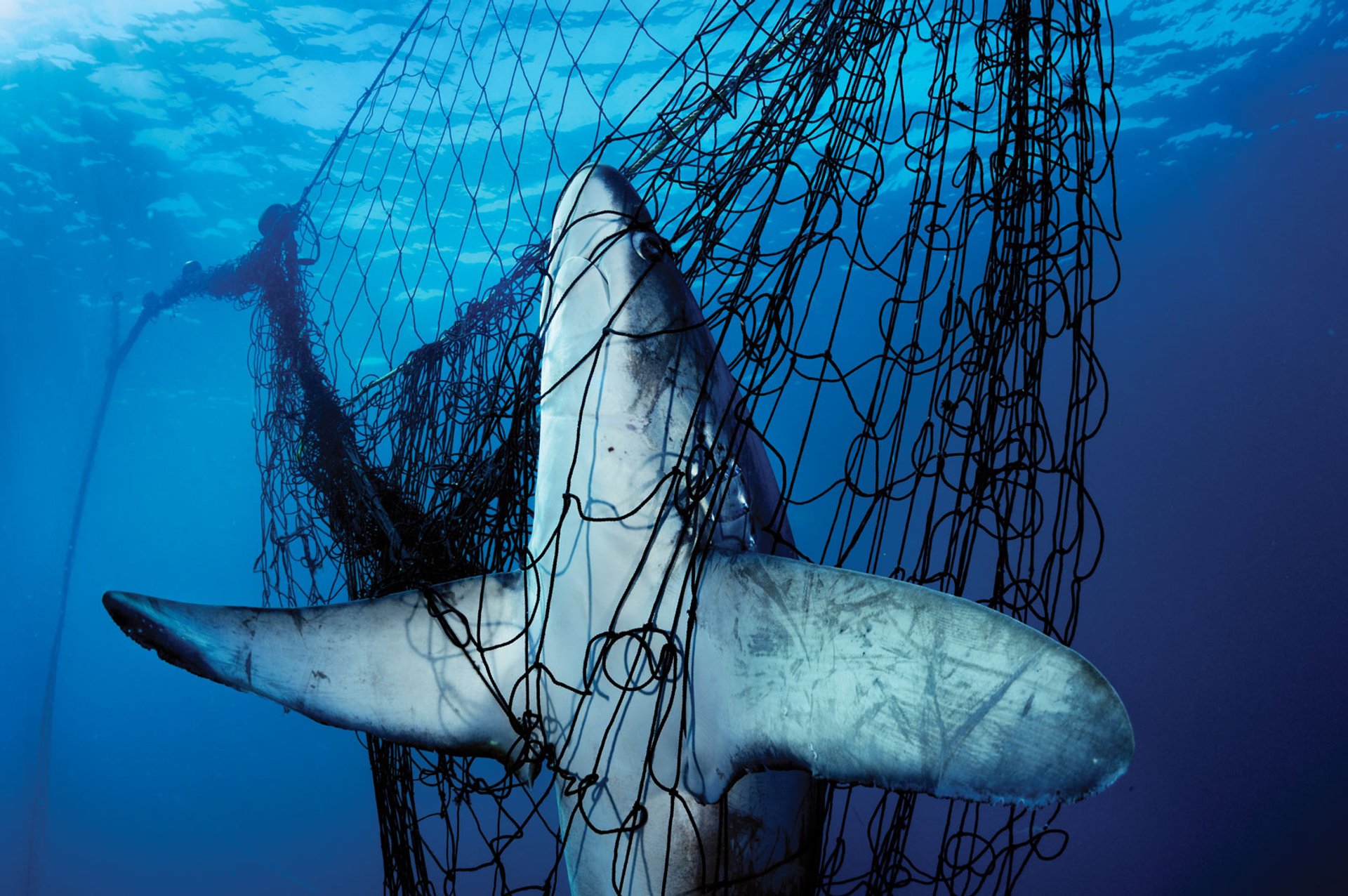
Bigeye Thresher Shark Caught in Net by Brian Skerry (2012) © Brian Skerry
A new collective, Photographers Against Wildlife Crime, has formed to address this question and to confront the nation primarily connected to this horrific rise in poaching: China. Co-founded by the award-winning photographer Britta Jaschinski, the group includes some of the most renowned wildlife photographers in the world, including Adrian Steirn, Brent Stirton and Brian Skerry. It was formed in part due to wildlife crime’s lack of visibility in Western publications, Jaschinski says.
“Millions of animals are caught and harvested from the wild and sold in China as food, pets, tourist curios, trophies and for use in traditional Chinese medicine,” she says, adding that the issue doesn’t get the column inches it deserves. “The subject is so upsetting for a lot of people that magazines shy away from publishing such imagery,” Jaschinski adds. “It doesn’t sell well.”
Reaching the target audience
Together, Jaschinski and her colleagues crowdfunded and self-published a collection of their photographs alongside contemporary reporting on the issues behind wildlife crime. The book was initially published in English and quickly sold out. “But we realised we weren’t reaching the target audience that really mattered,” Jaschinski says.
Working in conjunction with a Chinese printer based in London, Jaschinski and her team have translated the book into Mandarin. After months of negotiating with the authorities, they are now in the process of distributing the book across the Chinese mainland.
The book is the first of its kind to be created specifically for a Chinese audience, and explicitly sets out to end the demand for wildlife products in China. It will be launched across the country in July and August, actively targeting the Chinese wildlife consumer market, the trading nucleus for one of the biggest black markets in the world.
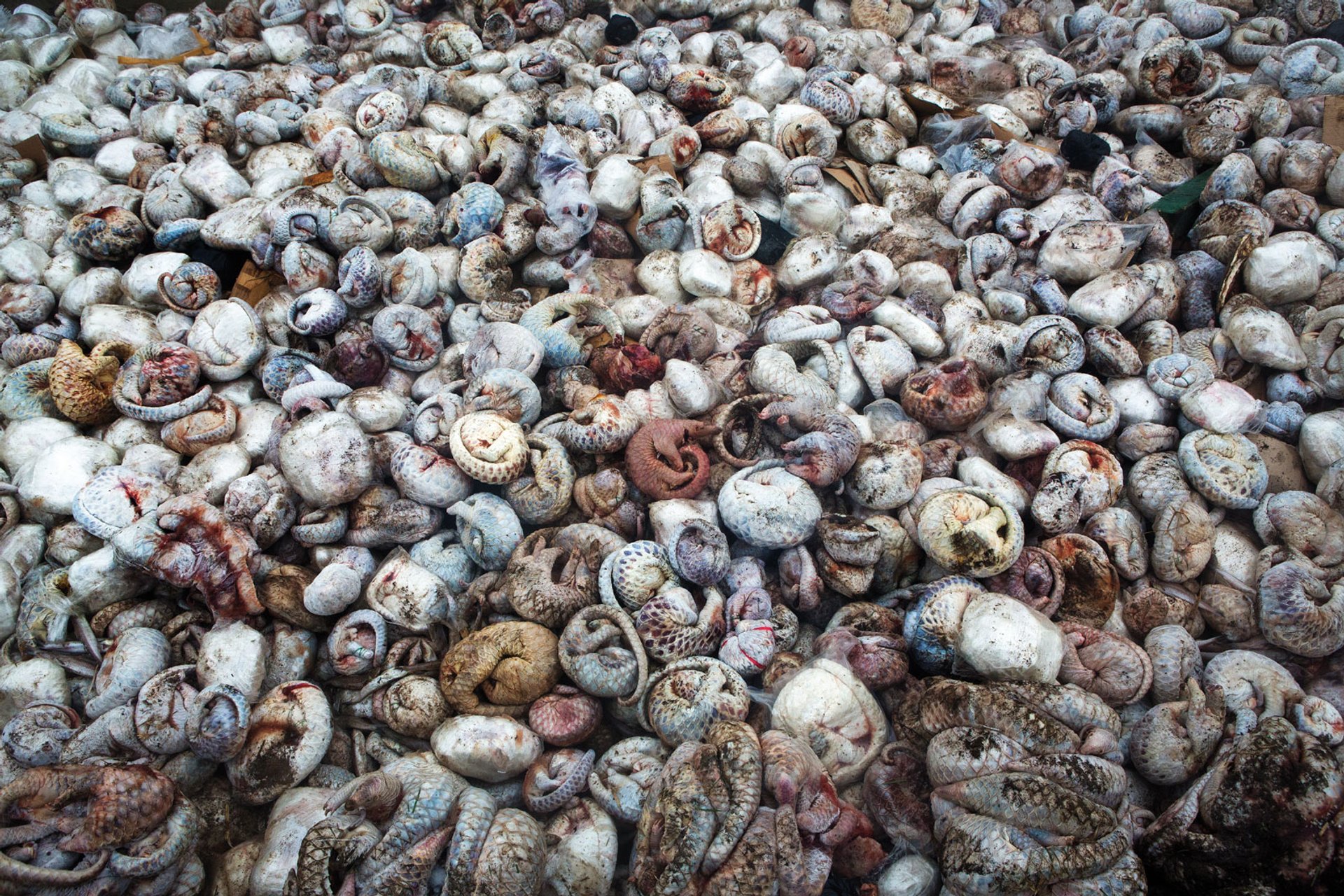
Frozen pangolins by Paul Hilton © Paul Hilton
The illegal wildlife trade is the world’s fourth biggest criminal trade after drug smuggling, illegal firearms trade and human trafficking. The price of rhino horn on the black market, Jaschinski points out, is more valuable by weight than gold, diamonds or cocaine, according to a study by Science Advances. Rhino horn is estimated to fetch up to $60,000 per pound on the black market, and the illicit industry as a whole is estimated to be worth $20bn. Andrea Crosta, the director of the Elephant Action League, has called ivory the “white gold of jihad”, pointing out that al-Shabaab, an Islamic terrorist organisation, is funded directly by the illicit ivory and rhino horn trade in China.
Ban is barely enforced
In 2017, the Chinese authorities announced that all trade in ivory and its products would be made illegal. But the ban was barely enforced, Jaschinki says. The trade in rhino and tiger has been prohibited since 1993, but in October 2018, China alarmed conservationists by announcing that products from captive animals are authorised “for scientific, medical and cultural use”.
“I’ve worked on wildlife crime for 25 years—and I don’t distinguish between legal and illegal wildlife crime,” Jaschinski says. “China is becoming the economic leader of the world; I wanted to look at the horrendous treatment of animals and nature in the country, and especially at the link between poaching and trade in the country, and the mistreatment of animals in captivity in China.”
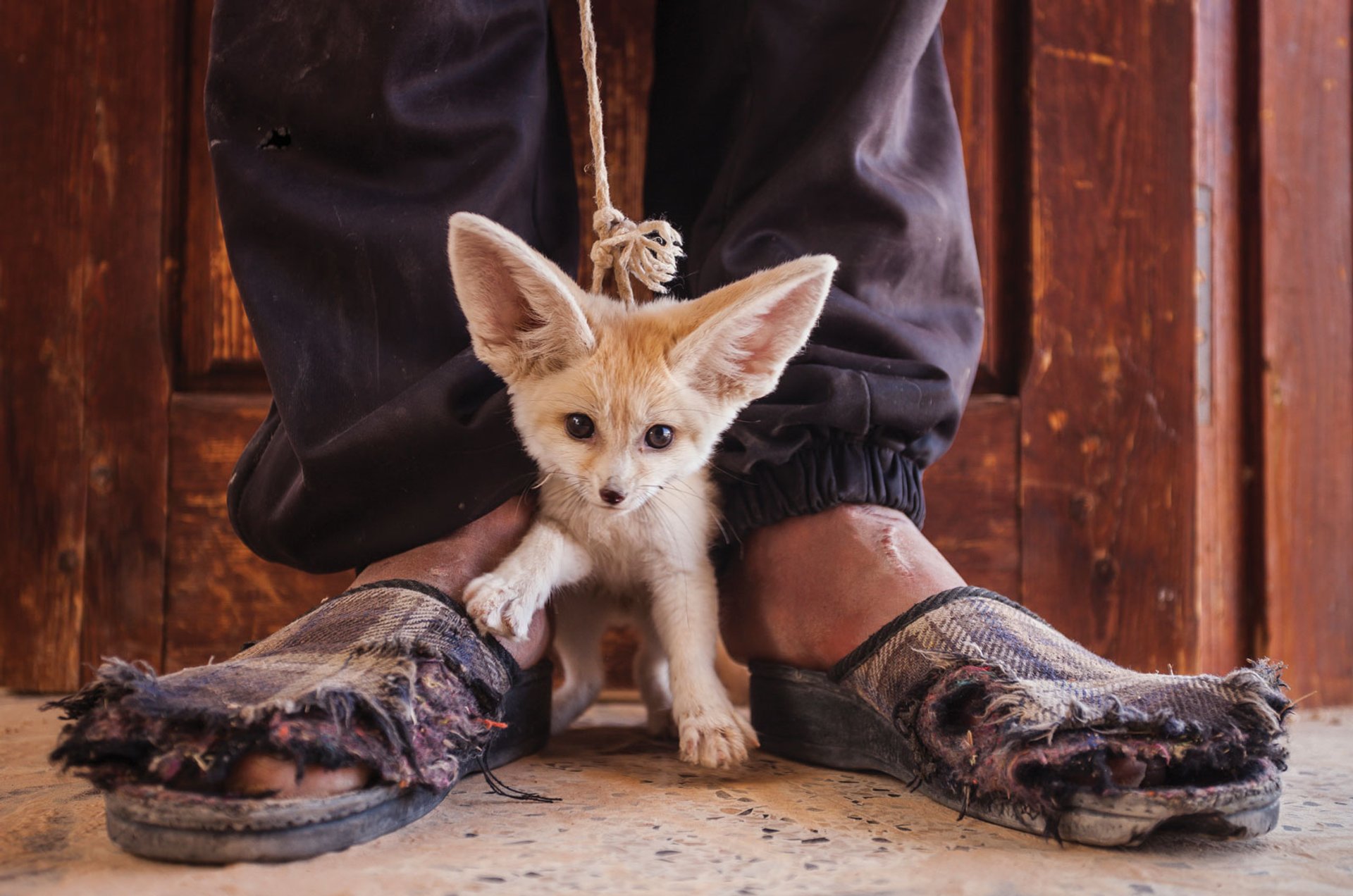
Bruno D'Amicis's image of a Fennec fox pup offered for sale to a tourist after being caught in the desert in Tunisia. (Kebili Governorate, Tunisia, May 2012) © Bruno D'Amicis
While the images are often appalling, they have artistic merit, for each photographer involved has approached the subject from a different perspective, and by employing a different style. In the introduction to the book, Roz Kidman Cox, the chair of the Natural History Museum’s Wildlife Photographer of the Year jury, writes: “Some set out to highlight injustice through statement art, creating images that are unforgettable through their power—fury expressed beautifully. Others take dismembered beauty and reincarnate it in a haunting arrangement, turning evidence into art. Or they use the iconography of classical art to give their compositions human resonance, echoing a crucifixion, a deathbed repose or the spoils of war.”


